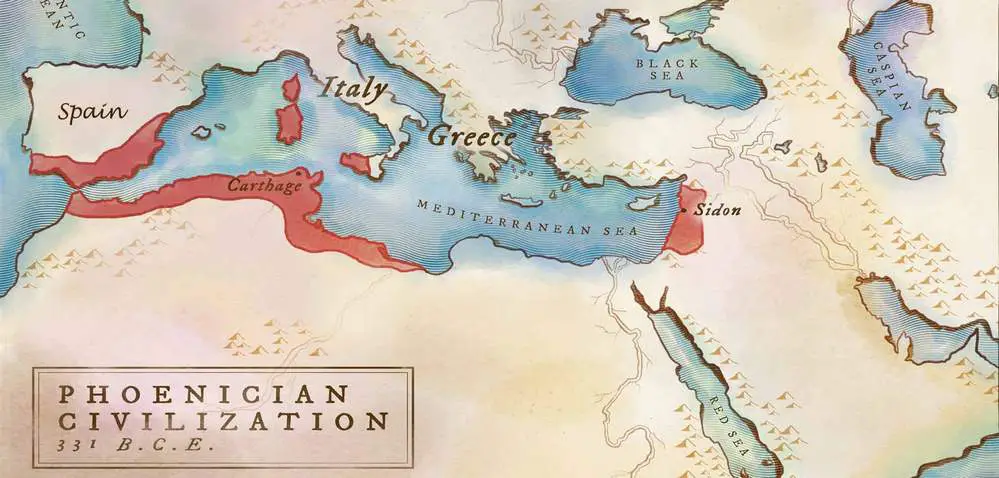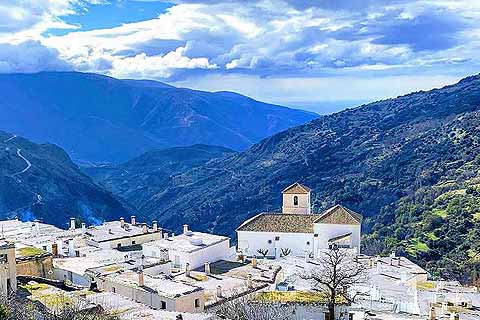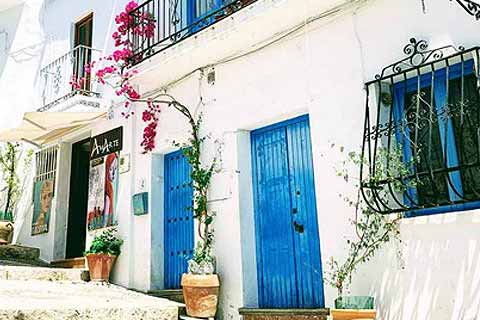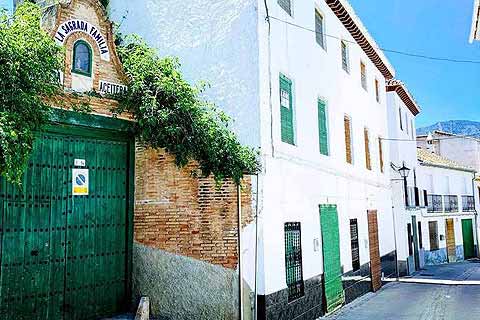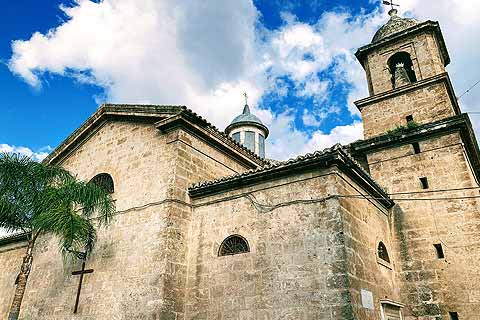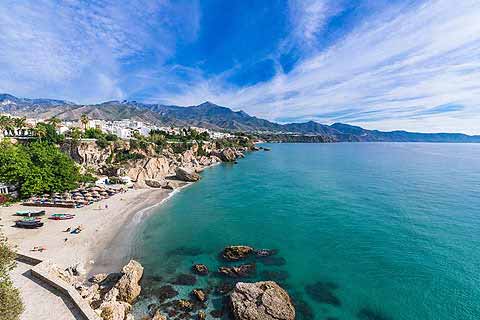Phoenician History of Almuñécar
Almuñécar was first settled by the early Phoenicians during the late Bronze Age, around 1500 BC. With their arrival, Phoenician Almuñécar, or "Sexi" as they called it, was put on the map for the first time, and would remain an important coastal center for centuries to come. Who were these people that inhabited the area so long ago? And, where did they come from?
Hailing from the coasts of modern day Lebanon and northern Israel (capital Tyre), the Phoenicians reigned through 1550 BC to 300 BC. Their culture advanced through maritime trading with the Greeks and then throughout the entire Mediterranean region with the development of new trade routes.
The Phoenicians were very powerful during this time due to their lucrative trading of wood, glass and a purple powder called Tyrian that was very important to the Greek Elites. Tyrian was used as a dye for clothing and other textiles as well as giving the Phoenicians their name, coming from the greek word "phoinikeia", meaning purple.

Phoenician and its Mediterranean colonies
In the centuries following 1200 BC, the Phoenicians formed the major naval and trading power of the region, their trade was founded on the much sought after Tyrian purple powder. They also established a second production center for the purple dye in Mogador, in present day Morocco.
Through their trading and expansion throughout the Mediterranean they obtained other sought after materials, the most important being silver from the Iberian Peninsula (Spain) and tin from Great Britain. They continued establishing commercial ports throughout the region, the most strategically important being Carthage (modern day Tunisia) in North Africa.

The Phoenician trade route
The most important Spanish outposts controlled by the Phoenicians were:
- Abdera (modern Adra)
- Abyla (modern Ceuta)
- Akra Leuke (modern Alicante)
- Gadir (modern Cádiz)
- Ibossim (modern Ibiza)
- Malaca (modern Málaga)
- Onoba (modern Huelva)
- Qart Hadašt (Spanish Cartagena)
- Rusadir (modern Melilla)
- Sexi (modern Almuñécar)
After about 539 BC the powerful Phoenician culture went into decline. They were conquered by Cyrus the Great in 539 BC and after a brief renewal Alexander the Great took their capital in 332 BC. Most of the Phoenician population migrated to Carthage where it continued to flourish mining iron and other precious minerals obtained through the Iberian Peninsula. Carthage was later destroyed by Rome at the end of the Punic Wars in 146 BC.
One of the greatest achievements of the ancient Phoenicians was the development of the alphabet. They were the first society to make use of an alphabet and through their trading passed its use on to the Greeks and then to the Romans who further refined it into what we know it as today.

The Phoenician alphabet which later became our modern day alphabet
Phoenician Almuñécar
Because of its prime location on the coast of the Mediterranean and its protection by the Sierra Nevada mountain range, Almuñécar has been an ideal location for centuries and a host to many different cultures. The Phoenicians first arrived in Almuñécar around 1,500 BC and became a flourishing culture in Andalucia by around 1,000 BC.Although they set up trading colonies in many of the spanish coastal towns, Almuñécar is thought to have been the first place visited by the Phoenicians and also the resting point while on their way to colonizing and founding Gadir (modern day Cadiz). Cadiz's founding date is 1,100 BC, which may make it the oldest city in Europe.
Almuñécar was settled by the Phoenicians in around 8th century BC (900 BC), most of the population settled into what is currently called the "Casco Antiguo", or old town. This is located on the elevated area outside and around the San Miguel Castle and across from the Penon Del Santo which juts out into the Mediterranean sea.
The Phoenicians gave Almuñécar the name "ex" or "sexi" but more importantly they gave the city its start as an important fish curing center. The fish curing industry would peak during the Roman times as Almuñécar would become the main resource for certain fish sauces that were a staple in Roman life and enjoyed all throughout the Roman Empire.
In 1962 the Laurita Necropolis was found on the Cerro de San Cristobal, this event sparked a further investigation of the area as well as the entire coast of Southern Spain into the presence and lives of the ancient Phoenicians. Surprisingly, with such a vast and interesting history, Almunecar has been rarely studied throughout the years. It was not until as recently as 1979 that the city began actively investigating its history and unearthing its past.
The two most important findings in Almuñécar of the ancient Phoenicians are the Laurita Necropolis and the Bridge of Noy, both were used for burial.
The Laurita Necropolis is a Phoenician burial chamber where at least twenty members of their society were laid to rest. The individuals were cremated and placed in alabaster urns along with personal items such as jewelry. We know this because ancient remains have been found of human bone as well as beads and other pieces coming from bracelets and necklaces.
These items can be seen in the Almuñécar Municipal Archaeological Museum located in the old town. This area corresponds to the beginning of the Phoenician presence in 8th century BC while later burials from the 7th century BC and onwards were found at the Bridge of Noy. The Bridge of Noy burial area, which has as many as 200 burial plots, was used by the Phoenicians and later by the Romans.
Phoenician monuments to visit in Almuñécar
Laurita NecropolisBridge of Noy
Fish Curing / Salting Factory
